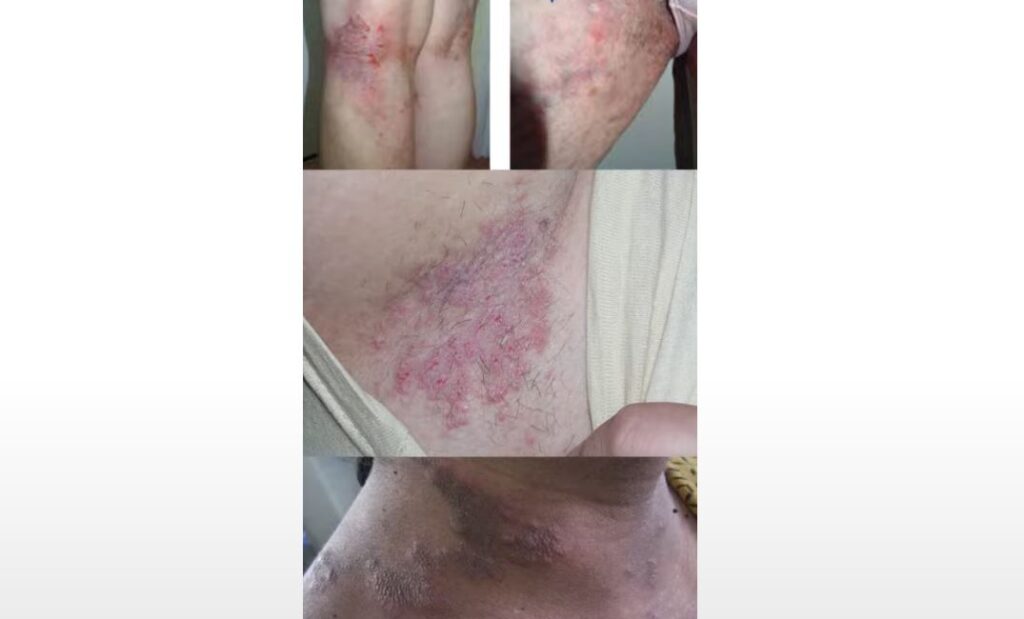
Rare but extremely disruptive, Hailey-Hailey disease is a skin condition that frequently goes unnoticed by the general public. This genetic disease, in contrast to common dermatological disorders, causes a persistent cycle of excruciating blisters and skin breakdown, making even everyday tasks difficult.
Knowing the Science Underpinning Hailey-Hailey Illness
Hailey-Hailey disease is fundamentally an inherited condition caused by a mutation in the ATP2C1 gene. This gene is essential for maintaining the close connections between skin cells. The mutation causes the skin to become brittle, which can result in painful blisters, especially where the skin rubs against one another.
Essential Facts About Hailey-Hailey Disease
| Category | Details |
|---|---|
| Scientific Name | Benign Familial Pemphigus |
| Genetic Cause | ATP2C1 gene mutation |
| Primary Symptoms | Blisters, skin erosions, redness, secondary infections |
| Commonly Affected Areas | Armpits, groin, neck, under the breasts |
| Trigger Factors | Heat, sweating, friction, infections |
| Age of Onset | Usually post-puberty, but can occur at any age |
| Treatment Methods | Corticosteroids, antibiotics, laser therapy, botulinum toxin injections |
| Is It Contagious? | No, it is a hereditary condition |
| Long-Term Outlook | Chronic, with recurring flare-ups |
How Does It Feel to Have Hailey-Hailey Disease?
Consider wearing shoes that cause raw blisters that never seem to go away because they rub against your skin all the time. For those who have Hailey-Hailey disease, this is their everyday reality. The never-ending cycle of wound healing and reopening can be emotionally and physically taxing.
What Is the Course of Symptoms?
Early adulthood is when symptoms start to appear for the majority of people. Clusters of excruciating blisters form after the skin first becomes irritated. These delicate blisters are prone to breaking, leaving exposed, raw skin open to infection. In extreme situations, flare-ups can be triggered by seemingly insignificant activities such as walking, wearing specific fabrics, or being in warm weather.
Managing Triggers: The Key to Reducing Flare-Ups
Since there is no permanent cure, managing environmental and lifestyle factors is crucial. Patients must be vigilant about:
- Keeping cool: Heat and sweating significantly worsen symptoms.
- Wearing soft, breathable clothing: Avoiding rough fabrics helps reduce friction.
- Using mild skincare products: Harsh chemicals and fragrances can exacerbate irritation.
- Practicing stress management: Emotional distress can increase the likelihood of breakouts.
Innovative Treatments That Are Changing Lives
Although traditional treatments focus on managing symptoms, recent breakthroughs have introduced promising alternatives:
- Botulinum toxin (Botox) injections help reduce excessive sweating, a common trigger.
- Laser therapy is being used to remove affected skin layers, allowing healthier tissue to regenerate.
- JAK inhibitors and low-dose naltrexone have demonstrated notable improvements in some patients with persistent symptoms.
The Effects of Having a Rare Illness on the Mind
In addition to the physical discomfort, Hailey-Hailey disease has a significant emotional cost. Because the condition is visible, it can cause social disengagement, depression, and self-consciousness. Since the illness is frequently confused with infections or other common skin conditions, many patients say they feel misunderstood.
How Near a Cure Are We?
Researchers are making great strides in creating gene therapy solutions, even though a permanent cure is still elusive. Researchers are looking into ways to fix the ATP2C1 mutation and get skin cells to function normally again. These treatments have the potential to revolutionize Hailey-Hailey disease treatment in the future if they prove effective.
FAQs About Hailey-Hailey Disease
What causes Hailey-Hailey disease?
It is caused by a genetic mutation in the ATP2C1 gene, which weakens skin adhesion.
Is it contagious?
No, Hailey-Hailey disease is a genetic disorder and cannot be spread through contact.
Can diet help manage symptoms?
Some patients report reduced flare-ups with anti-inflammatory diets, but there is no definitive evidence that diet alone can control the disease.
What is the best way to prevent flare-ups?
Avoiding heat, sweat, and friction is key. Keeping skin dry and using protective ointments can also help.
